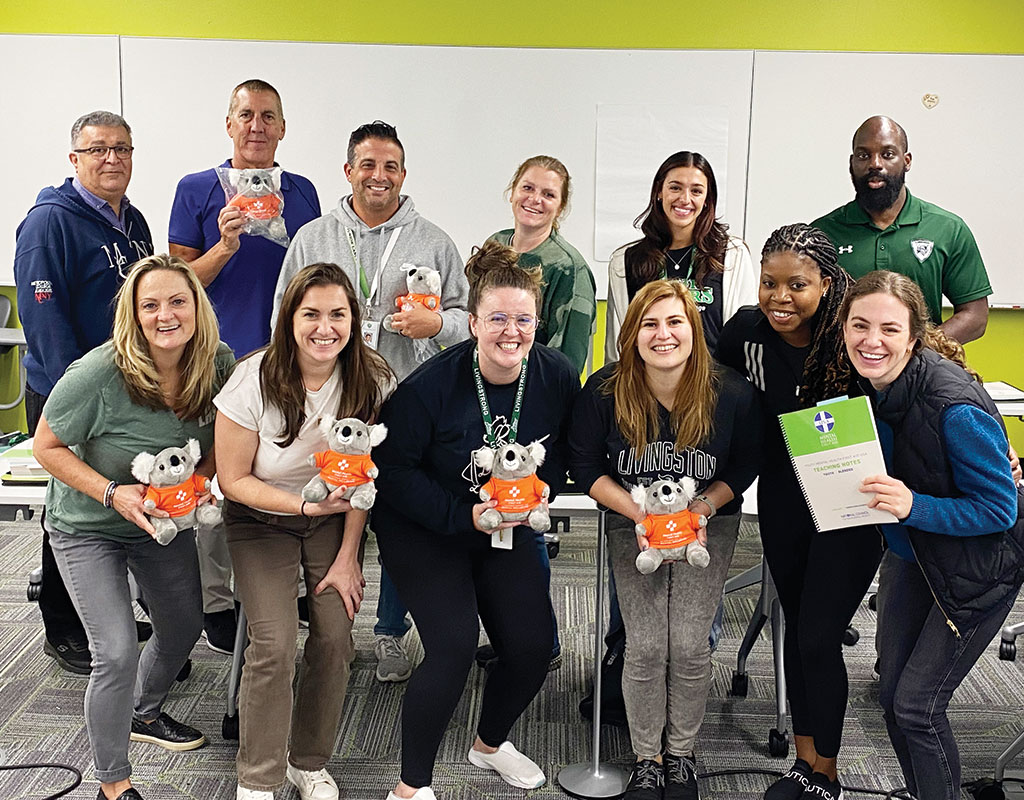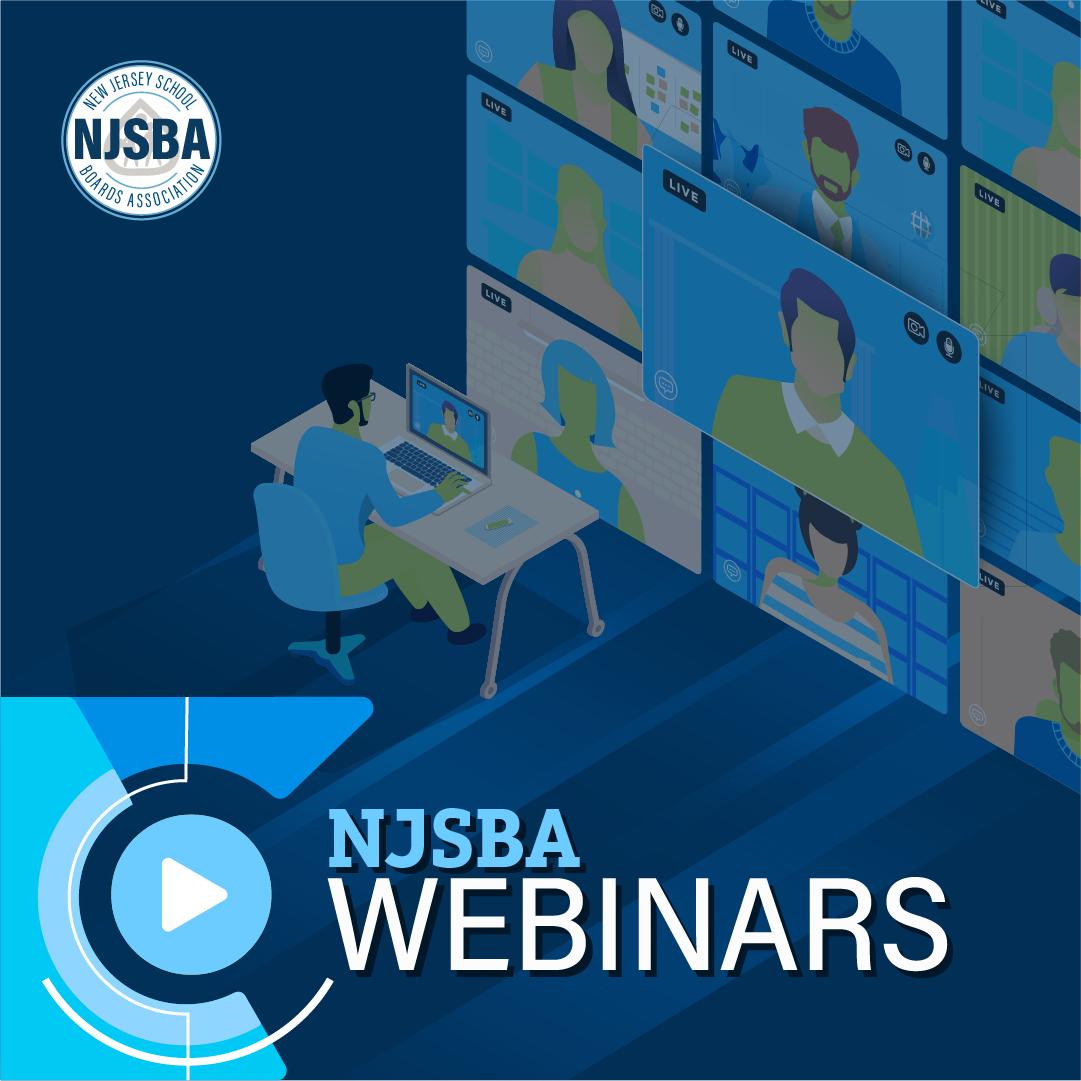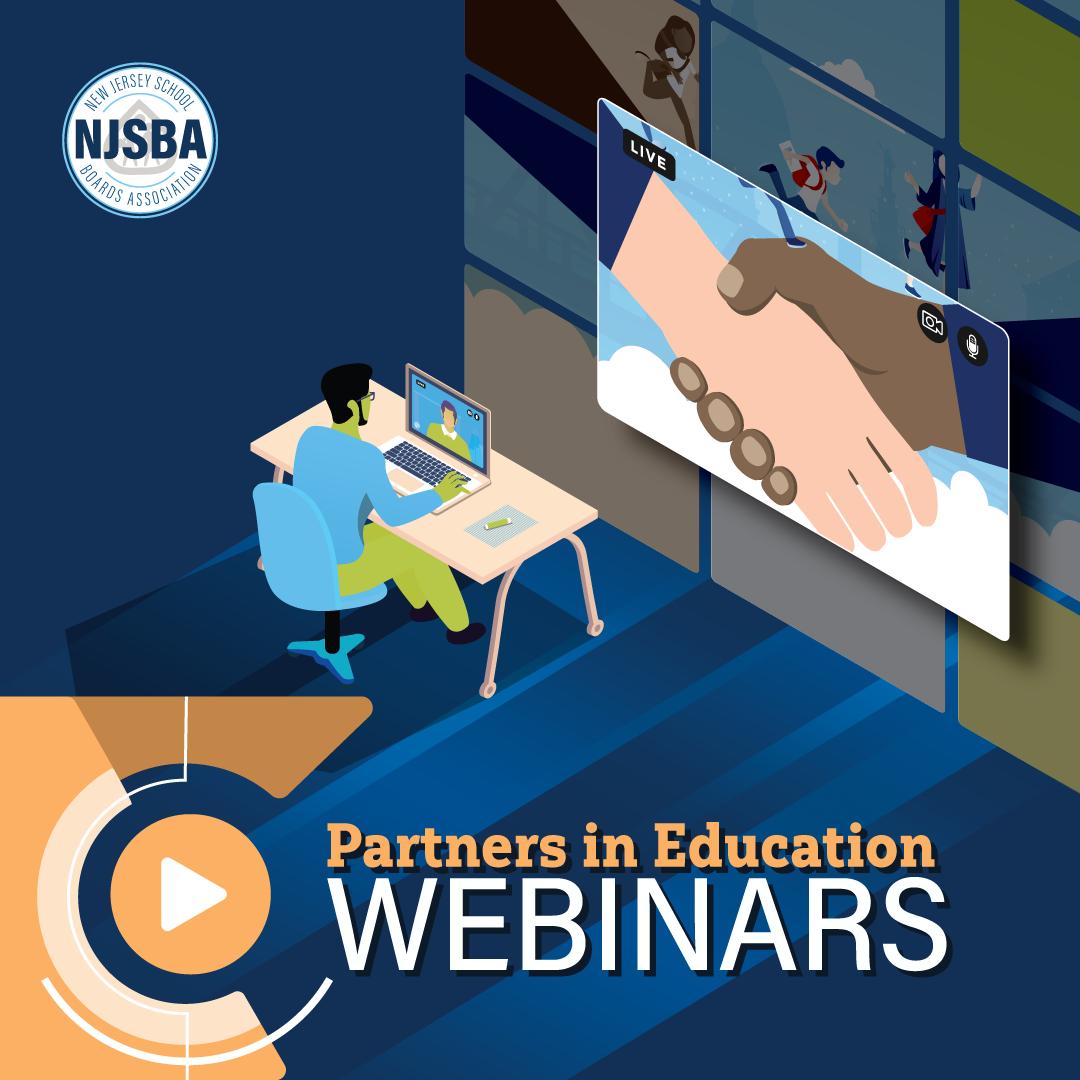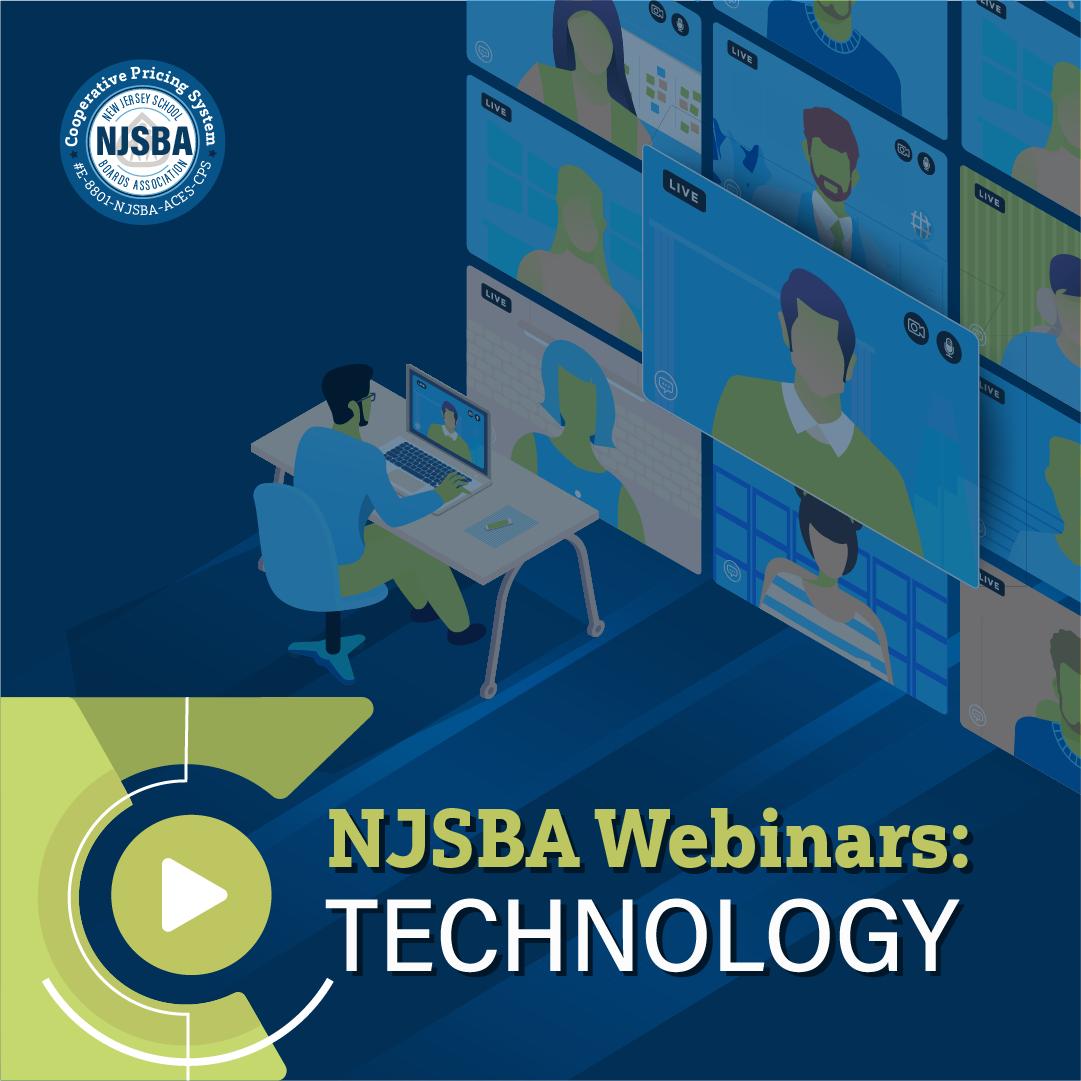They aren’t preoccupied with social distancing – and friends don’t scurry away at the sound of a sneeze anymore.
But many students in New Jersey continue to struggle. The challenges are just different.
Whether they are stressed out over a looming test, battling feelings of anxiety or confronting a problem at home, students face obstacles just as if not more formidable than the ones they struggled with during the COVID-19 pandemic.
School Leader recently caught up with leaders from two districts to find out how they are promoting mental health and giving students the tools they need to navigate the daily twists and turns of life, so they can be more successful in the classroom and wherever they go.
Spreading Feelings of ‘Zen’ at BCIT
The Burlington County Institute of Technology, which serves 2,200 students at its Westampton and Medford campuses – knew it would focus on mental health when it received a sizeable grant from the Department of Health and Human Services’ Substance Abuse and Mental Health Services Administration.
Jennifer Rayford, the SAMSHA grant project coordinator for BCIT, noted that an initial $1.8 million in funding was received about three years ago before being renewed last year. In total, the district will receive about $3.6 million through the Project AWARE (Advancing Wellness and Resiliency in Education) program, with funding continuing through September 2026.
The purpose of the program is “to develop a sustainable infrastructure for school-based mental health programs and services.” Grantees leverage partnerships to implement mental health-related promotion, awareness, prevention, intervention and resilience activities to ensure that school-aged youth have access and are connected to appropriate and effective behavioral health services.
The district has put the money to good use, embarking on a series of initiatives, including making a “Zen Den” available at each campus, starting with the Medford campus last year before a similar but smaller space was rolled out in Westampton this school year.
“This is a dedicated space for students to access during their lunch block,” Rayford said.
The Zen Dens allow students to “reset and practice mindfulness,” she said. They can do puzzles or play a variety of games, such as checkers, chess or Uno.
Eder Joseph, assistant superintendent at BCIT, noted that the district partners with Prevention Plus of Burlington County, whose mission is to promote the health, wellness and safety of individuals and families by providing professional services for the prevention of the misuse of alcohol, tobacco and other drugs and related issues through education, collaboration and advocacy.
As a result of the partnership, a licensed clinician is always in each Zen Den, providing on-site mental health support for students, counseling, crisis intervention and stress management strategies in a safe and supportive environment.
Twice a month, yoga is held during the lunch block – either in a Zen Den itself or nearby, giving students another chance to practice mindfulness and reset, Rayford said.
The yoga is conducted by Project Little Warriors, which is a nonprofit organization that brings mindfulness and self-love to the younger generation by way of yoga and fitness.
In Westampton, 70 students participated in yoga in December 2024 at a location near the Zen Den. At BCIT’s Medford campus, yoga was held in the Zen Den itself, with about 30% of students participating, Rayford said.
It’s been interesting to see the yoga offering attract attention from diverse groups, she said. “We have a set of young men who participate in the yoga, and they are athletes and very well versed in physical health,” she said. So, when they found out we were providing yoga at the school, they jumped at it.”
Students who use the Zen Den – and others as well – also enjoy spending time with therapy dogs who visit once a month, alternating visits to each campus through a partnership with the Tri-State Canine Response Team, a nonprofit organization.
Often, there is a line of students looking to interact with the therapy dogs, with one or two dogs coming at a time. The first visit, the dogs came to the Zen Den in Westampton, but the Zen Dens are so popular that the next visit at Westampton was in a counselor’s office, Rayford said.
A limited number of students – about five at a time – visit a therapy dog with a short discussion often occurring with the handler as they pet the dog, she said.
Joseph thinks the Zen Dens and ancillary activities have made a big difference.
“Students get to play and refocus,” he said. “They have music and a lounge chair. If you think about high school kids, the day can be really stressful. So, we are just trying to give them an opportunity during the day where they can take it down. Even our cafeteria is a big space, and some kids do need a different location.”
He added, “The Zen Den provides a staff member who is able to provide students with strategies and support … at home, you need to find your own little Zen Den space where you can take it down.”
In describing the Zen Dens, Rayford said to “think of everything Zen,” explaining, “So, when you think of a Zen space, you walk in, and the lights are dim and there is comfortable seating – we have beanbags at both campuses.”
Students can express themselves with art, using whiteboards at each Zen Den, she said. “They are able to tap out of the busyness of their environment,” she said.
Students sign in and sign out, and they are asked to reflect on how they are feeling when they enter versus how they are feeling when they leave.
“If they are still struggling, the clinician may reach out to the school counselor, who may provide more assistance,” Eder said.
The Zen Dens encourage peer connections that probably wouldn’t happen without the space being available, he said.
“They find each other in this space,” he said. “They have a conversation and make a connection.”
That pays big dividends when it comes to mental health, as it can be challenging to make real connections in a world that has so many gadgets, he said.
“How do we get back to having students see one another and have conversations with one another?” he asked, adding that the Zen Dens have helped students make headway in that area.
The Zen Dens also give students a chance to connect with an adult who may not be a teacher or counselor, said Adalgiza Pichardo, strategic marketing and enrollment coordinator at BCIT.
“It could be that one person they can talk to and vent and share things that may not even be tied to school but things that are going on at home,” Pichardo said.
Joseph added, “We have seen students going from the Zen Den to getting more direct support through one-to-one clinicians,” he said. “We’ve also had teachers recommend students go to the Zen Den if they are going through something or are stressed.” For instance, if there is a class that is split with lunch in between, a teacher may recommend a struggling student go to the Zen Den to “reset” before coming back.
One thing is clear: The students love the Zen Dens, with the Westampton campus logging 501 visits in December and 725 visits in Medford.
With grant funding running out, the challenge will be keeping the Zen Dens open, along with providing a variety of other mental health services the district is delivering to students via the award.
“Right now, planning wise, we are trying to determine what we can continue to fund and how can we staff it,” Joseph said. “We are looking at a school counselor as far as staffing – scheduling them to be in the Zen Den.”
Noting how many students visit each Zen Den, he observed there’s an opportunity for counselors to make a tremendous difference.
The best proof that the Zen Dens are helping is that if one must close for any reason, staff members at each campus hear complaints.
“The students get upset if they close,” Rayford said. “This is their space, and they look forward to it – it is their quiet time.”
BCIT also has other strategic partners to help promote mental health, including Creative Change Counseling, which is also connected to the SAMHSA grant. The group consists of a team of behavioral health providers dedicated to creating a supportive environment for clients facing mental health or behavioral challenges.
The district also partners with TESO Consulting Group, whose mission is to ensure all individuals, especially those who have been historically marginalized, have access to equitable, socially just, culturally responsive learning and working experiences.
Promoting Mental Health in Livingston

In August 2022, at Livingston Public Schools in Essex County, school counselors, school nurses, case managers, student assistance counselors and clinical counselors began taking Mental Health First Aid training. The National Council for Mental Wellbeing oversees the program.
“It caught my eye,” said Sinéad Crews, director of school counseling at Livingston Public Schools. “It was something a little different.”
With the district receiving money from the Elementary and Secondary School Emergency Relief Fund, which was established as part of the Coronavirus Aid, Relief, and Economic Security Act., the assistant superintendent for equity, inclusion, intervention and inspiration, Lisa Capone-Steiger, encouraged Crews to think bigger.
With funding, the program expanded to include other staff.
“We realized this is something we wanted to maintain over time,” Crews said. “We wanted to train the whole district. We wanted to extend training to our teachers, folks in the front office and to anyone with contact with kids.”
The district pulled together staff to take on the task of becoming certified Youth Mental Health First Aid instructors.
Now, the district has a team of 10 counselors who are instructors; they train staff throughout the preK-12 district. Over the past three years, more than 1,000 staff members have completed the training, Crews said.
“It is really nice to see it expand on such a large level,” Crews said. “I feel like we have put something in place where all our staff in PreK to 12 are speaking the same language. Now, our staff are equipped to help students going through a mental health concern or challenge.”
The fact that Livingston staff members are teaching their fellow educators is huge, Crews said.
“Who knows Livingston best other than our counselors, who know our kids?” she asked. Since they see what is happening in Livingston schools daily, they can tailor their approach, so it works for different staff members, she said.
“We don’t want a secretary feeling they have more on their plate than their job responsibility, but we also want them to be able to engage with kids who may be having a hard time,” Crews said.
Continuing to Dream Big
Getting staff trained in Youth Mental Health First Aid was important and essential, but the district was also thinking about how to help students more directly.
District leaders learned that the National Council for Mental Wellbeing also oversees a Teen Mental Health First Aid program that can be implemented in classrooms.
So, at the same time as it was getting staff trained in Youth Mental Health First Aid, a separate team of staff members took courses in Teen Mental Health First Aid, so they could serve as instructors and implement the program with tenth graders.
“We have another team of counseling professionals and teachers (a team of 18 versus the team of 10 who train staff) who became instructors in the teen mental health curriculum who went through a four-day training to become instructors,” Crews said. “And they deliver that curriculum to our tenth graders.”
As with the staff training, the instructors can tailor it to students as necessary, so that it makes a meaningful impact, Crews said.
The instruction occurs during the fall in physical education and health classes, and not everyone has been thrilled with missing out on time to play basketball or other sports, Crews said.
“But a lot of students have reflected on how valuable it was to have more dedicated time during the school day to talk about mental health and open up those doors,” she said. “Seeing the partnerships that have developed between teachers and counselors has been powerful.”
The curriculum is taught over a six-week period, with students receiving one lesson per week. A lot of teamwork was required to implement the program, Crews said, noting that the school counseling department partnered with the health and physical education departments. “I partnered with the K-12 health and PE supervisor, Mr. Rob Grosso, to implement the program between our two departments for the past three years,” she said.
The curriculum is spread out on purpose.
“The program does not want you to just in one week hit all six lessons and say, ‘Now we are done,’” Crews said. “It is designed intentionally that way, so that it is spread out over time to allow for reflection, for space in between the lesson, and to make it a continuous conversation.”
The material covered includes:
- First session: Mental health in general, what mental health challenges are, how common they are in teens.
- Second session: The impact of mental health challenges on teens, how people with mental health challenges can cope and identify professionals who can help.
- Third session: Helping a friend who is in crisis, introducing the tMHFA Action Plan (“Look, Ask, Listen, Help Your Friend”) and how it can be used in a crisis situation. A video shows a teen helping a friend who is experiencing suicidal thoughts.
- Fourth session: Helping a friend who is in another type of crisis, such as threatening violence or harm to others, engaging in nonsuicidal self-injury, or experiencing a traumatic event such as bullying, abuse or assault.
- Fifth session: How to help a friend who may be in crisis due to substance use, how to help when a friend might be developing a mental health challenge.
- Sixth session: Recovery, resiliency and all final activities to complete the tMHFA course.
At the end of each session, students are asked to fill out an “exit ticket” to reflect on one thing they learned that day. They can also note if they would like to talk to someone.
Instructors go through every exit ticket, Crews said.
“There have been plenty of situations where a student has checked off ‘Yes, I would like to talk to someone immediately’ or soon,” Crews said. Often, the students who want to talk to someone immediately actually are concerned about a friend, as part of the program consists of recognizing signs and symptoms from others who may be in need.
“This has allowed for immediate conversations to happen, and I give a lot of credit to our kids. If they see something, they usually say something,” she said.
When students take the curriculum, certain ground rules are established, including confidentiality, Crews said.
“Some of the content that is covered can be heavy for some people and may trigger things for some folks,” she said, noting there are always two staff members in the room to support students.
The district prides itself on being transparent with parents and the larger community about the curriculum. A portion of a letter that was sent to parents/guardians described the program:
This is an evidence-based training that teaches teens how to identify, understand and respond to signs of mental health and substance use challenges in their friends and peers. The training gives teens the skills they need to have supportive conversations with their friends and emphasizes the importance of getting help from a responsible and trusted adult.
Teens at Livingston High School, like so many others across the nation, may be in need of mental health support themselves, or have friends who are in need. Our District prioritizes this need to provide our students with the tools necessary to reach out for help. Young people often turn to each other when stressed or upset and try to help, sometimes taking on too much. tMHFA teaches them they do not have to take these problems on alone. The course discusses issues that some teens may find distressing, like school violence and suicide.
Since there are about 500 students in each high school grade level, that means about 1,500 students have been trained in Teen Mental Health First Aid over the past three years – only tenth graders, Crews said.
“There are certain parameters we have to follow, one being the earliest we can implement the curriculum with kids is the tenth grade,” Crews said. “We did not want to wait.”
Crews appreciates that Livingston has gone with a vetted program that is research based.
“While we did not need to do this, it has worked out very well – and we have been able to fund our staff being trained to become instructors, which was expensive,” she said. “Also, to buy three years’ worth of materials – there is a workbook that students use – involved a substantial amount of money.”
Workbooks must be replenished, and instructors must complete a certain amount of training each year to maintain their certification. “But as long as we maintain that piece of it, they can train our staff every year,” Crews said.
However, students need those workbooks, which the district must figure out as funding gets depleted, Crews said.
“Before we even had brought the Teen Mental Health First Aid program into our high school, our counselors were partnering with our health and PE teachers, and we were starting to be a little more robust with that starting in sixth grade and going on up through high school,” Crews said. “So, we are not going to say, ‘We’ve run out of workbooks and our ESSER funding is gone, so we are not going to do this anymore.’”
Rather, the question has become, “How do we want to make this work?” Crews said. “Do we have the funding in some capacity to continue this program or is it time to create our own?”
Other districts with the wherewithal might want to consider implementing Mental Health First Aid for staff and Teen Mental Health First Aid for students, Crews said.
“This enhanced what we were already doing and brought it to another level,” she said. “It brought a consistent approach to the whole district, which is essential. And it delivered that message during a time when we needed to focus on the mental health of our students, our staff and ourselves.”
Thomas A. Parmalee is chief public affairs officer at the NJSBA.



